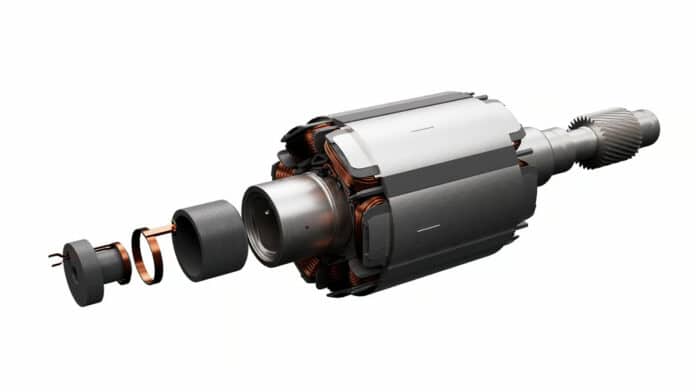The development of magnet-free electric motors has become an increasingly popular topic within the fast-growing electric vehicle (EV) industry. These motors are designed to be more efficient and cost-effective than traditional magnet-based motors, making them an attractive option for automakers looking to reduce production costs and improve the overall performance of their EVs.
As the demand for electric vehicles continues to grow, several companies around the globe have been hard at work innovating and refining magnet-free electric motors to make them a more viable option for the fast-growing EV industry.
In a similar effort, ZF Friedrichshafen has introduced a new space-efficient motor for electric vehicles that eliminates the need for magnets, offering more efficiency and sustainability.
The German firm has achieved this by integrating its inductive current transmission unit inside the rotor itself, making the motor uniquely compact with maximum power and torque density. This ultra-compact magnet-free e-motor design, it says, offers comparable performance to the permanent-magnet synchronous motors (PSMs), currently the most common form of drive for electric vehicles.
In addition, ZF’s I2SM (In-Rotor Inductive-Excited Synchronous Motor) does not require permanent magnets or rare earths, making e-motors both extremely sustainable in production and highly powerful and efficient in operation.
By eliminating the need to extract and process rare earth materials, ZF Group claims that the I2SM reduces the carbon footprint of engine production by up to 50%. The engine also addresses supply chain challenges associated with rare earth materials.
While free from magnets, the conventional separately excited synchronous motors (SESM) concepts still require sliding or brush elements in most cases to run electrical current into the rotor windings. This leads to an increase in size and weight while introducing more friction and potential for wear and tear. Also, it calls for a dry installation space, i.e., not accessible for oil cooling and with additional seals.
Since the conventional SESMs take up around 90 mm more space axially, this installation space must be planned for in the vehicle development. Manufacturers generally cannot flexibly vary between PSM and SESM variants in their model planning without additional effort.
On the other hand, ZF’s compact design is made possible thanks to their space-neutral integration of the exciter into the rotor, which means there are no axial space disadvantages. Additionally, an increase in power density in the rotor leads to improved performance. With its inductive transmission unit, the I2SM does not require any brush elements, slip rings, or additional seals.
In the future, the ZF Group plans to further refine and commercialize its I2SM technology within its e-drive platform. Commercial vehicle and passenger car manufacturers will have the option to choose between an 800-volt or 400-volt variant within this platform.
By developing a motor for electric vehicles without magnets, ZF Group demonstrates its commitment to sustainable transportation solutions. The technology not only reduces reliance on rare earth materials but also contributes to a greener manufacturing process for electric vehicles.
